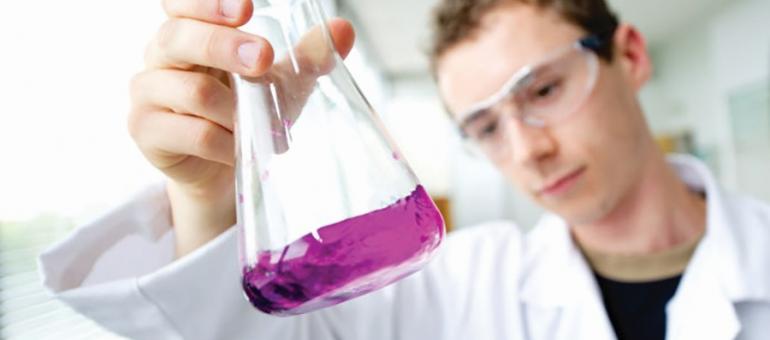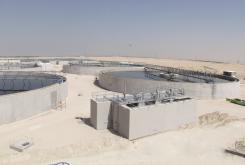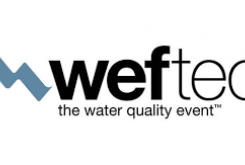A Guide to PFAS Remediation

PFAS, or per- and polyfluoroalkyl substances, are a new challenge for manufacturers and municipalities. These are long-lasting chemicals, components of which break down very slowly over time.
Regulatory requirements around PFAS are evolving, making reporting levels and treatment levels moving targets. Recently, the Biden-Harris administration finalized the first-ever national drinking water standard to protect 100 million people from PFAS pollution. Veolia is at the forefront of the fight against PFAS in drinking water in the United States, having treated 2.1 billion gallons of water in New York, New Jersey, and Pennsylvania across more than 30 sites, with dozens more underway. The company recently held an event to highlight its GreenUp program with a strong focus on PFAS.
However, PFAS can affect consumers in ways other than their drinking water. In the manufacturing sector, there are a number of companies taking action to use technology to treat PFAS within their facilities. According to Toxic-Free Future, 32 retailers with more than 150,000 combined stores have committed to reducing or eliminating PFAS in their packaging or production.
Essentially, PFAS are increasingly crucial in the water landscape. The need for remediation and treatment is clear, and while various technologies exist to treat PFAS, many people aren’t yet sure what steps to take.
Every facility is a zero-sum game — all materials that enter either go out as a finished product or as waste. But not all PFAS are equal. Some types of PFAS are more difficult to treat than others. Various capture, treatment, and disposal methods are available depending on the kind of PFAS that may exist within a water system.
For example, long-chain PFAS (which contain six or more carbons) behave differently in a water treatment process than short-chain PFAS (five or fewer carbons). The use of separation methods like foam fractionation and membranes or capture technologies like activated carbon and/or ion exchange can require special attention to the types of PFAS being treated. In addition, PFAS precursors can be transformed into PFAS within a facility once they encounter chemicals or temperature changes, and should also be accounted for in the treatment approach.
Even if your facility or industry isn’t facing PFAS regulations yet, testing for it and understanding how it entered the facility and how it may affect your product can be helpful.
The need for analysis
If you believe your facility may contain PFAS, an audit of all incoming and outgoing material can help. The audit would inform where you may need to take samples, which could then be sent to a lab to identify where the PFAS originated.
Even if you know your facility uses PFAS-containing materials, it’s vital to perform analysis so you know what to do next. Whether there are dissolved ions or organics (e.g. often reported as total organic carbon (TOC)) in the water impacts how to best treat it.
Labs can detect PFAS down to one part per trillion, providing accurate insight into the levels of individual types of PFAS contained within a specific water sample. Then, you need to determine what you want or need to achieve with treatment. For example, a food and beverage manufacturer may want to treat water used in its product or processes so as to achieve no lab-reportable levels of PFAS.
Types of treatment
Once you have lab results and a goal in mind, it’s time to consider the kind of treatment you’ll need to remediate PFAS. The options are broken down into three categories: separation, capture, and disposal.
Separation treatments like reverse osmosis and nanofiltration are gaining traction as popular PFAS treatment methods. An EPA study revealed that reverse osmosis separation is up to 99% effective for certain PFAS.
Activated carbon is a widely used capture treatment for PFAS that works like consumer carbon filters for home use. Anion exchange resins are becoming more popular for capturing PFAS and, as one study shows, are particularly effective for short-chain PFAS. Novel adsorbents also act as a capture method for remediating PFAS.
Promising technologies like electrochemical oxidation, thermal treatment, and a high-energy plasma to treat PFAS have emerged as disposal methods at pilot scale, but still need to be scaled up further to address additional challenges. Based on your facility location, discharge options and applicable PFAS regulations will determine the best remediation method.
How Veolia helps
Veolia provides end-to-end solutions that help customers sample, analyze, treat, and manage PFAS levels at the right level of cost for their current situation and any anticipated changes.
Our experts can help you understand the considerations that need to be accounted for in developing a PFAS treatment system, explain the technologies typically used, and determine whether pilot programs or extra lab testing are necessary. We then design a bridge or full-scale solution and help treat the PFAS you have identified.
As regulations and needs change, Veolia can provide a customized treatment plan that fits today’s and tomorrow’s requirements using cutting-edge technology. To start the conversation, reach out to a Veolia specialist who can help find the right solution.







